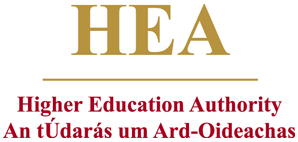Caitríon Ní Mhóra, an óigbhean mhaiseach - Máire Ní Arbhasaigh
Recording: [Download audio file]
[Download AIFF audio file (of processed ‘user’ version)]
[Download AIFF audio file (of archive version)]
Transcript
Ó, a Chaitríon Ní Mhóra, an óigbhean mhaiseach
A thug barr deise ar Vénus,
Sí seo an chúileann mhúinte bhéasach,
A gile gan smúid a fuair cliú ban Éireann,
An fhaoileann óg is milse póg.
Caitríon Ní Mhóra (...),
(...) láidir,
Is minic a thug (cíos) ins an áit seo,
Ó, a lon dubh an tséin is na (gcraobh ildaite),
Is (í siúd) atá mé a ráitigh[1].
Translation
O, Caitríon Ní Mhóra, the beautiful young woman
Who was more beautiful than Venus,
She is the polite and mannerly fair maiden,
Her brightness without blemish famed above all the women of Ireland,
Young maiden of the sweetest kisses.
Caitríon Ní Mhóra (...),
(...),
Who often paid their due in this place,
Oh, blackbird of the good luck and the multi-coloured branches (?),
It is to her that I refer (?).
Footnotes
= rá. Cf. Patrick S. Dinneen, Foclóir Gaedhilge agus Béarla (Dublin, 1927; repr. 1996), s.v. ráidhtigh. (Back)Commentary
This would appear to be related to a longer poem composed by Turlough O'Carolan entitled 'Seabhac Bhéal Átha Seanaidh' ('The Hawk of Ballyshannon'). See Tomás Ó Máille, Amhráin Chearbhalláin (London, 1915), 135-8, 292-3. It can be found under various other titles such as 'Seabhac na hÉirne', 'Inghean Uí Mhórdha', and 'Catríona Ó Mórdha'. Énrí Ó Muirgheasa published a version of the song which he believed showed the deterioration from its original form through oral transmission over successive generations. See Dhá chéad de cheoltaibh Uladh, (Dublin, 1934), 62-3. James Hardiman gives an account of the poem claiming that O'Carolan composed it upon a request from 'the son of O'Reilly (who), returning from Leitrim, accidentally met the 'Fair daughter of O'More' near her father's residence.... Shortly afterwards, at an entertainment at the house of O'More, the youthful lover took an opportunity of reciting the ode accompanied by the music of the harp'. See James Hardiman, Irish minstrelsy (2 vols, London, 1831), vol. 1, 113-6. However, there are many contradictory accounts regarding the subject of the poem, which Donal O'Sullivan investigates in Carolan: the life, times and music of an Irish harper (2 vols, London, 1958), vol. 2, 82-4. He concludes that the song celebrates the wedding of Charles O'Donnell, the son of Colonel Manus O'Donnell of Newport, county Mayo, to Katherine O'More, the niece by marriage of Conor O'Reilly of Ballinlough, county Westmeath. The term 'Hawk of the Erne and of Ballyshannon' is explained as a reference to the bridegroom's ancestor Niall Garbh O'Donnell. Edward Bunting noted that the melody to which the poem is associated is in fact an 'altered composition of Rory Dall [Ó Catháin], being his Port Atholl'. See Edward Bunting, Ancient music of Ireland (Dublin, 1840), 91. The harper Derek Bell plays the melody 'Catríona Ó Mórdha' on Carolan's favourite (Claddagh Records, 1979).
This song is transcribed also in Róise Ní Bhaoill, Ulster Gaelic voices: bailiúchán Doegen 1931 (Belfast, 2010), 332-3.
Title in English: Caitríon Ní Mhóra, the comely young lady
Digital version published by: Doegen Records Web Project, Royal Irish Academy
Description of the Recording:
Speaker:
Máire
Ní Arbhasaigh from Co.
Armagh
Person who made the recording:
Karl Tempel
Organizer and administrator of the recording scheme: The Royal Irish Academy
In collaboration with: Lautabteilung, Preußische Staatsbibliothek (now Lautarchiv,
Humboldt-Universität zu Berlin)
Recorded on 25-09-1931 at 18:00:00 in Queen's
University, Belfast. Recorded on 25-09-1931 at 18:00:00 in Queen's
University, Belfast.
Archive recording (ID LA_1225d2, from a shellac disk stored at the
Royal Irish Academy) is 00:39 minutes
long. Archive recording (ID LA_1225d2, from a shellac disk stored at the
Royal Irish Academy) is 00:39 minutes
long.
Second archive recording (ID LA_1225b2, from a shellac disc stored in
Belfast) is 00:38 minutes long. Second archive recording (ID LA_1225b2, from a shellac disc stored in
Belfast) is 00:38 minutes long.
User recording (ID LA_1225d2, from a shellac disk stored at the Royal
Irish Academy) is 00:38 minutes long. User recording (ID LA_1225d2, from a shellac disk stored at the Royal
Irish Academy) is 00:38 minutes long.





